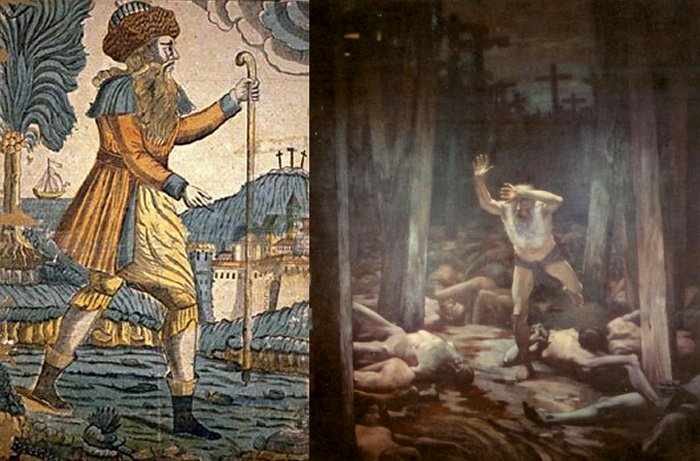Legend Of The Immortal Wandering Jew Cursed By Jesus
David Tee - AncientPages.com - It all started with a curse.
“As Jesus sank beneath the load, He turned his pitying eye to the unfeeling child of Israel, and, pointing up on high, said, “yes, I go for it needs must be, but until I do return, thou must go, to and fro…” (Eugene Sue, 1881)
With these words, the sage of the wandering Jew begins its journey. It is said that the story is based on Matthew 16: 28 which reads: “Truly I say to you, there are some of those who are standing here who will not taste death until they see the Son of Man coming in His kingdom.”
Wandering Jew by Juif Errant. Credit: Musée d'art et d'histoire du Judaïsme - Right: The Wandering Jew by Samuel Hirszenberg (1899). Credit: Public Domain
To some this idea is legitimate. Over the centuries it has been said that many of the early believers did not see death. Joseph of Arimathea was said to be still alive living in Arimathea in the 13th century AD.
Others stated that Jesus’ words meant that John the apostle would stay alive until Christ’s return. But no one ever offers any real proof of these claims or that those men lived beyond their normal years.
The Legends Of The Wandering Jew
While it was Eugene Sue who penned the original words, some readers over the centuries felt that it lacked something. Great writers like Goethe, Dumas and Hans Anderson, to name a few, tried their hands at making this story into a literary masterpiece. They all failed.
It was usually the unknown writers who had better luck bringing more drama to the scenario and make it a better read. Most failed because the story lacked drama. It was about a Jew who wandered endlessly. Most attempts to spice up the work failed because they devolved into geography or history lessons. These topics failed to ignite the interest of the general public.
Then, the story’s main character changed with almost every rendition. Some authors had Ahasuerus as an old man. Others made him out to be a young male. Still others had him age then was rejuvenated and returned to a young age when he got too old. Finally, some wrote that he died but was reincarnated.
See also:
Mythical Kingdom Of Prester John – Did It Exist?
Mystery Of The Witch Of Endor – A Biblical Ghost Story Or A Woman With Supernatural Powers?
Who exactly was this wandering Jew? That was a question all authors failed to identify. The failure to add dramatic situations also doomed all attempts to punch up the story. There are none in the original as Ahasuerus was given just two by Mr. Sue. The actual time of the curse and the end of his wandering at doomsday.
It is also said that Ahasuerus made an appearance to the Bishop of Schleswig in 1542. The Bishop gave a description of the man he saw in the church. As the men conversed, the Bishop was surprised to hear a first-hand account about the sufferings of the original apostles.
Over 30 years later another sighting took place in Spain. Schleswig ambassadors to Spain reported back that they had seen the man the Bishop had talked to 3 decades earlier except that he spoke perfect Spanish.
The different authors who wrote about the Wandering Jew, Chaucer to Cervantes, from Rodrigues Lobo to Mark Twain, from Eugène Sue to Fruttero and Lucentini, added to the legend and had Ahasuerus embellished to mythical proportions. One example, he was given the ability to speak all earthly languages.
The Wandering Jew Comparison With Cain
It is inevitable that there would be some comparisons with Cain. Like the wandering Jew who was cursed by Jesus, Cain was cursed by God. Genesis 4:12 says- “When you cultivate the ground, it will no longer yield its strength to you; you will be a vagrant and a wanderer on the earth…”
Cain slaying Abel by Peter Paul Rubens. The Courtauld Gallery, London. Credit: Public Domain
The only difference between the two curses is that we have record of God’s curse on Cain. We do not have any record of Jesus’ curse on Ahasuerus. The life of Cain is not really known after he takes his wife and leaves his family.
All we know is the name of a few of his descendants and that he built a city. Gen. 4:16 to 17 give us those details. But there is no mention of how long Cain would live in his curse. It can be concluded that he died in old age, but we cannot be sure.
Ahasuerus was given a life sentence and said to have been condemned to live until Christ returns. No one knows when that event will take place. If Ahasuerus was a real person, then he should be alive today and spotted more frequently than just to times in 2,000 years.
Legend Of The Wandering Jew And Its Impact On Christians
When examining the story of the wandering Jew there may be elements that will hold some importance to some groups of Christians. Since it is a work of fiction, not all Christians would agree that the story holds any significance for them.
The story may come from Christian traditions but again those traditions are not the same for every segment of the faith. One lesson that can be gleaned from the encounter of Ahasuerus with Jesus would be the consequences of sinful actions.
Ahasuerus decided to mock and sin against Jesus whereby he was given an immediate judgment and sentence. But even with that moral lesson the story does not fit with the nature and character of Jesus who forgave his tormentors and executioners.
Surely, they were more eligible for such a curse than a lowly shoemaker who only said a few words to Jesus as he passed by. The curse by Jesus also goes against his teaching found in the Gospels.
The legend of the wandering Jew may continue to wander through literature and be expanded, altered and embellished. It is highly likely that more writers will take on the story to see if they can add more moral lessons, drama and so on.
As it stands, it is a legend only. One that does not fit the nature of New Testament thinking or teaching.
Written by – David Tee AncientPages.com Staff Writer
Copyright © AncientPages.com All rights reserved. This material may not be published, broadcast, rewritten or redistributed in whole or part without the express written permission of AncientPages.com
Expand for referencesMore From Ancient Pages
-
 Lost Ancient Texts Of The Star Catalogue Composed By The Greek Astronomer Hipparchus Found
News | Feb 21, 2023
Lost Ancient Texts Of The Star Catalogue Composed By The Greek Astronomer Hipparchus Found
News | Feb 21, 2023 -
 Siege Of Masada – The Last Stand Against The Roman Empire
Civilizations | Mar 27, 2017
Siege Of Masada – The Last Stand Against The Roman Empire
Civilizations | Mar 27, 2017 -
 Enormous And Impressive Derawar Fort, Bahawalpur, Pakistan Will Be Restored
News | Sep 14, 2015
Enormous And Impressive Derawar Fort, Bahawalpur, Pakistan Will Be Restored
News | Sep 14, 2015 -
 Manasota People: Will 1,300-year-Old Village Tell Us About Their Lives?
Archaeology | Jan 11, 2016
Manasota People: Will 1,300-year-Old Village Tell Us About Their Lives?
Archaeology | Jan 11, 2016 -
 Giant Pre-Hispanic Jar Used To Make Mexican Traditional Corn Beer
Archaeology | May 6, 2020
Giant Pre-Hispanic Jar Used To Make Mexican Traditional Corn Beer
Archaeology | May 6, 2020 -
 Capoeira: Ancient Martial Art Disguised As A Dance Became A Symbol Of Resistance To Oppression
Ancient History Facts | Jun 8, 2018
Capoeira: Ancient Martial Art Disguised As A Dance Became A Symbol Of Resistance To Oppression
Ancient History Facts | Jun 8, 2018 -
 On This Day In History: Robert I, King Of Scots Known As ‘Robert The Bruce’ Was Born – On July 11, 1274
News | Jul 11, 2016
On This Day In History: Robert I, King Of Scots Known As ‘Robert The Bruce’ Was Born – On July 11, 1274
News | Jul 11, 2016 -
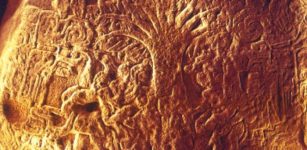 Ceiba Tree: Sacred Tree Of Life Of Maya People And Universal Concept In Ancient Beliefs
Celtic Mythology | Jun 12, 2017
Ceiba Tree: Sacred Tree Of Life Of Maya People And Universal Concept In Ancient Beliefs
Celtic Mythology | Jun 12, 2017 -
 Master Kong Confucius: Great Philosopher And ‘Teacher Of All Teachers’ Ahead Of His Time
Featured Stories | Nov 25, 2016
Master Kong Confucius: Great Philosopher And ‘Teacher Of All Teachers’ Ahead Of His Time
Featured Stories | Nov 25, 2016 -
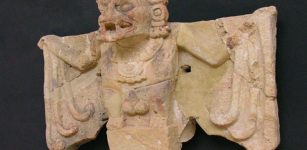 Camazotz: ‘Death Bat’ Vampire God In Ancient Maya Beliefs
Featured Stories | Jun 8, 2017
Camazotz: ‘Death Bat’ Vampire God In Ancient Maya Beliefs
Featured Stories | Jun 8, 2017 -
 The Invisible Plant Technology Of The Prehistoric Philippines
Archaeology | Jul 1, 2023
The Invisible Plant Technology Of The Prehistoric Philippines
Archaeology | Jul 1, 2023 -
 On This Day In History: Du Fu – ‘The Sage of Poetry’ Was Born – On Feb 12, 712
News | Feb 12, 2017
On This Day In History: Du Fu – ‘The Sage of Poetry’ Was Born – On Feb 12, 712
News | Feb 12, 2017 -
 Pyramid Of Unknown Ancient Egyptian Queen And Hundreds Of Mummies Discovered In Saqqara
Archaeology | Nov 17, 2022
Pyramid Of Unknown Ancient Egyptian Queen And Hundreds Of Mummies Discovered In Saqqara
Archaeology | Nov 17, 2022 -
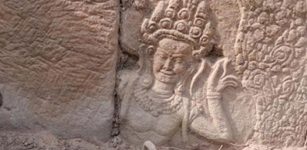 Apsara Carvings Dated To 12th Century Uncovered At Takav Gate In Angkor, Cambodia
Archaeology | May 5, 2022
Apsara Carvings Dated To 12th Century Uncovered At Takav Gate In Angkor, Cambodia
Archaeology | May 5, 2022 -
 Polynesian Stonehenge: Enigmatic Ha’amonga ‘a Maui Trilithon Of Tonga
Civilizations | Sep 11, 2018
Polynesian Stonehenge: Enigmatic Ha’amonga ‘a Maui Trilithon Of Tonga
Civilizations | Sep 11, 2018 -
 Neanderthals’ History Retrieved From Cave Sediments In Siberia And Spain – New Method
Archaeology | Apr 19, 2021
Neanderthals’ History Retrieved From Cave Sediments In Siberia And Spain – New Method
Archaeology | Apr 19, 2021 -
 Three 3,500-Year-Old Painted Wooden Coffins Discovered In Luxor, Egypt
Archaeology | Dec 3, 2019
Three 3,500-Year-Old Painted Wooden Coffins Discovered In Luxor, Egypt
Archaeology | Dec 3, 2019 -
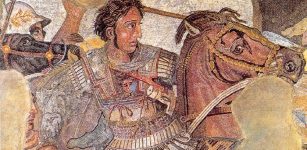 How Did Alexander The Great Die?
Featured Stories | Apr 9, 2016
How Did Alexander The Great Die?
Featured Stories | Apr 9, 2016 -
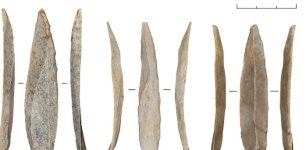 Mass Production Of Stone Bladelets Led To A Cultural Shift In Paleolithic Levant
Archaeology | Jan 7, 2023
Mass Production Of Stone Bladelets Led To A Cultural Shift In Paleolithic Levant
Archaeology | Jan 7, 2023 -
 Ratatoskr- Inhabitant Of Yggdrasil That Loves Intrigue, Strife And Gossips In Norse Beliefs
Featured Stories | May 28, 2020
Ratatoskr- Inhabitant Of Yggdrasil That Loves Intrigue, Strife And Gossips In Norse Beliefs
Featured Stories | May 28, 2020

